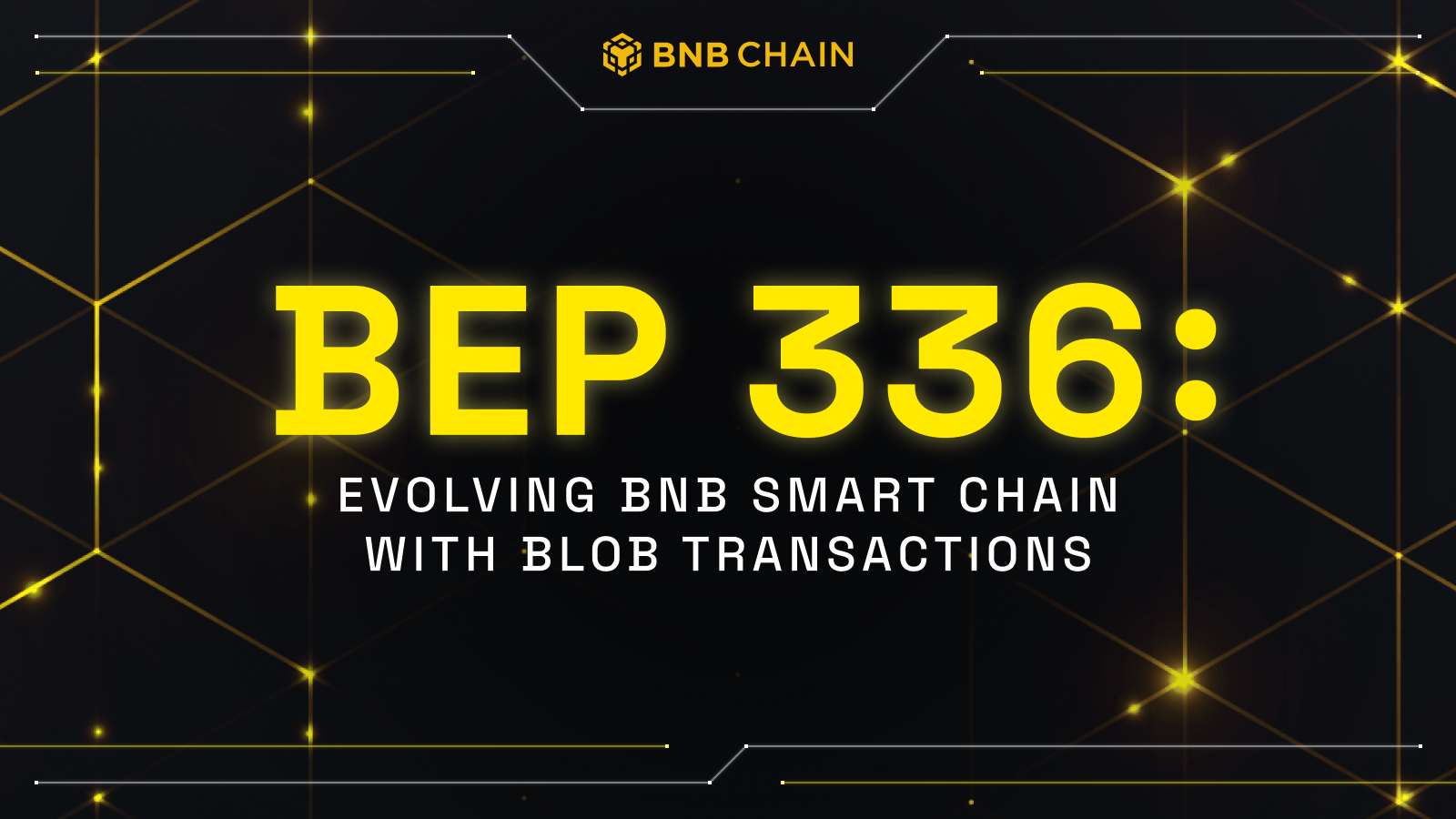Table of Contents

BNB Smart Chain (BSC) is introducing a major upgrade called “BEP 336.” This upgrade, modeled on Ethereum’s EIP 4844, seeks to optimize how data is stored and processed on the blockchain, significantly reducing transaction costs and enhancing network performance. As we explore the nuances of BEP 336, we’ll shed light on its workings and the positive ripple effects it’s expected to create across the BSC ecosystem.
What is BEP 336?
BEP 336 introduces the concept of “Blob-Carrying Transactions” (BlobTx). A blob is a temporary and cost-effective memory segment designed to capture large data chunks, each up to 128 KB. These blobs are strategically crafted to streamline the network’s transaction verification process. Instead of individually verifying each transaction within a block, the network needs only to verify that the attached blob contains accurate data.
Transactions within blob-carrying blocks will be particularly useful for opBNB – the layer 2 network of the BNB ecosystem. opBNB currently leverages BSC for data storage while leveraging its security features. The temporary attribute of blobs ensures they don’t indefinitely consume network space, leading to lower storage costs and, consequently, cheaper gas fees for users.
This temporary storage strategy is an efficient way to manage blockchain bloat and ensure efficient data handling without compromising the integrity and availability of the data within its lifespan on the chain.
Along with blob transactions, BEP 336 will also have the following two parts:
- Blob Market: Blobs have their own fee market, which ensures that the costs for storing and transmitting blobs are regulated according to network demand.
- Precompile Contract: Used to verify that the data in a blob matches the reference to the blob included in the blob-carrying transaction. This adds an extra layer of security.
Key Differentiators
While BEP 336 draws inspiration from Ethereum’s EIP 4844, it is tailored to fit the unique architecture and requirements of BSC. .
Blob propagation
The architecture design of BSC necessitates that blobs be managed solely by the BSC client, a distinction from Ethereum’s approach.
This necessitates a bespoke strategy for blob propagation and persistence, ensuring seamless operation within BSC’s framework.
Gas price mechanism
BSC will have a dynamic gas pricing mechanism for blobs, with minimum and maximum thresholds to maintain reasonable transaction costs. This feature is not present in Ethereum’s implementation.
Fee burn
The blob’s Base Fee is burnt on Ethereum, but not on BSC since it has a different token burn mechanism.
The Rollout Plan
BSC has laid out a clear and phased roadmap for the integration of BEP 336:
- Testnet launch in April: This initial phase will enable developers to test and interact with BEP 336 in a controlled environment, ironing out any potential issues before wider deployment.
- Magnet phase in May:During this phase, further testing and optimization will occur, ensuring the robustness and scalability of BEP 336’s implementation.
- Mainnet hard fork in June: This culminating phase will see the official deployment of BEP 336 on the BSC mainnet, heralding a new era of efficiency and cost-effectiveness for the network.
The Benefits of BEP 336
The deployment of BEP 336 is anticipated to have far-reaching implications for both developers and users within the BSC ecosystem.
- Reduced gas fees: By eliminating the need for permanent storage of certain data types, BEP 336 significantly lowers the cost of transactions on the BSC network.
- Efficient data management: The temporary storage mechanism ensures that the blockchain remains lean and bloat-free, improving overall network performance.
- User-friendly: With lower costs and enhanced efficiency, BEP 336 makes the BSC ecosystem more accessible to a broader audience, from seasoned developers to blockchain novices.
What Else Does BNB Chain Have Planned for 2024?
In 2024, BNB Chain is committed to enhancing scalability and user experience through a series of strategic upgrades and new products. Key among these is “Parallel EVM Re-Architecture” which promises to significantly enhance transaction processing and scalability.
Additionally, BNB Chain has ambitious plans for opBNB. The “Rollup as a Service” (RaaS) initiative will cater to the specific needs of large-scale Dapps, allowing them to develop customized L2 solutions. opBNB will also implement “path-based storage scheme” (PBSS) to further optimize storage, aligning with our roadmap’s efficiency goals.
This broad spectrum of innovations underscores BNB Chain’s dedication to building a high-performance blockchain infrastructure that anticipates and adapts to the digital landscape’s rapid evolution.
Conclusion
By addressing the dual challenges of data management and transaction costs, BEP 336 represents BNB Chain’s forward-thinking approach to blockchain scalability and efficiency. As our community eagerly anticipates the rollout of this upgrade, the potential for innovation and growth within the ecosystem has never been greater. Stay tuned for more updates.

![[AMA Recap] Exploring the Future of AI Agents on BNB Chain: REVOX Edition [AMA Recap] Exploring the Future of AI Agents on BNB Chain: REVOX Edition](https://bnbsmartchain.com/wp-content/uploads/2025/02/AMA-Recap-Exploring-the-Future-of-AI-Agents-on-BNB-Chain-REVOX-Edition-211x150.jpg)
